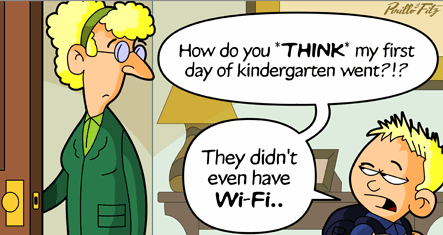As we have seen during this year, technology has so many advantages that the non-inclusion of it in the classroom may be considered inconceivable. The use of it helps students to learn in an engaging context that goes hand in hand with the outside world. That is to say that the classroom becomes a more real context.
Another important advantage is the fact that it is environmentally friendly. In a world in which pollution is a topic that worries almost everyone, having resources that allow us to avoid wasting paper, for example, is really useful.
Moreover, it goes without saying that innumerable resources can be found on the web - texts,videos, activities, etc.- which help not only teachers, but also students to have whatever they need at hand.
After reading and watching different resources that emphasize the important role that technology has in the classroom, teachers may wonder whether their role is still important.
As it was said before, technology provides all the resources you need. However, students need someone who guides them, someone to help them in their learning process: the teacher.’Teachers are concerned with more than just the knowledge their students acquire – they’re often called on to act as guidance counsellors or provide emotional support’ (Partarrieu, 2015). The teacher and the students face-to-face interaction is something that technology cannot provide.
That is why we consider that blended learning is so important since it is a balance between the use technology and face-to-face interaction. The students have the chance to use technology at their home with educational purposes.
| Retrieved from http://www.elmmagazine.eu/images/mazohl%20figure%202.jpg |
In the following video, you can get a clear explanation of what blended learning is:
Sources:
Partarrieu, S, 2015. Why we still need face-to-face teaching in the digital age. Retrieved from https://www.britishcouncil.org/voices-magazine/why-we-still-need-face-face-teaching-digital-age on 25-10-2016


